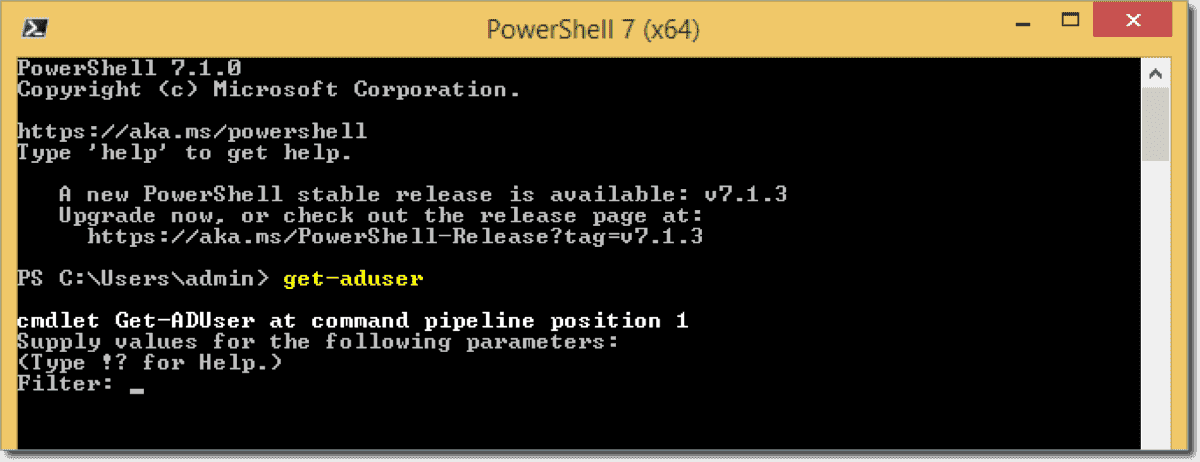

Click the Active Directory Module for Windows PowerShell. Login to exchange server and click on start and type PowerShell in search programs and files text box. In Windows 7 and Windows Server 2008 R2 with PowerShell 2.0 installed, to start using the Active Directory module, you need to import it into the PowerShell session with the command: import-module activedirectoryYou can use the PowerShell command to set the picture for user in Active Directory. This is however not the situation for User and System Discovery.Importing PowerShell Active Directory Module on Windows.
Determine containers to import in ConfigMgrSince my script leverage a CSV file for container import, I wanted to give you a few tips on how we can use PowerShell to determine what containers we would want to add to the CSV file. So in this blog post, I’ll show you how you can leverage the script that I’ve created to import containers (OU’s) by their distinguished names from a CSV file in ConfigMgr. However, in the past I’ve always wanted to write a script to automate this task, and I recently had the time to do just that (during a huge ConfigMgr implementation). Sometimes, there’s only a few locations that you’d need to include, and in such situations I don’t bother with any kind of automation. If the module is installed in the right place, you will receive.Since most of the Active Directory environments often have been around for a very long time, and due to several factors, the OU structure is simply not just suited for specifying a single distinguished name to an OU and then select to recursively include what’s under it.
If you’re thinking, that’s not many various locations that for instance user accounts may be stored. However, I’d rather just work my way around the fact the issue at hand instead of re-structuring the Active Directory. For example, in the picture below you can see my lab environment and how I’ve configured it like in real world scenarios that I often run into.Now, as shown in the picture, this may not be the most efficient structure for various reason.

The CSV file should also be constructed like shown above.For demonstration purposes, I’ve saved my CSV file with container data for my Users OU’s in C:\Temp on my Primary Site server. What about System Discovery then? No worries, since what I’ve demonstrated up until now is exactly the same process for containers (OU’s) that you wish to add to the System Discovery Method. This will be translated into the proper data types required to add the containers to the Discovery Methods. Options for Recursive is either Yes or No, and for Group it’s simply Included or Excluded. In the Recursive and Group columns, add the desired configuration.
Import Active Directory Powershell Command Download It Straight
How to use the scriptNow that we’ve downloaded the script, which is placed in C:\Scripts in my lab environment, we can execute it providing the CSV file that we’ce constructed. You also have the option to download it straight from this post, by using the link below:Either grab the script from my GitHub repository or download it from the link above. Browse to ConfigMgr – Site Administration and look for Import-CMDiscoveryMethodContainers.ps1.
Speaking of selected Discovery Method, that’s where the ComponentName parameter comes into play, as shown in the command line below. It will also check for duplicate distinguished name entries, if case you’ve made a mistake in your CSV file, or if it’s already present in the selected Discovery Method. If the script detects that the distinguished name of the current object it’s processing does not have the LDAP protocol prefix, it will simply add it. Don’t worry, I’ve got you covered.
Check the Properties of the Active Directory User Discovery to see how it has been extended:Also, notice how the Recursive and Group columns that we entered in the CSV have been taken into account when the containers have been imported. Your containers that we determined are now added to the User Discovery Method. \Import-CMDiscoveryMethodContainers.ps1 -SiteServer CM01 -ComponentName SMS_AD_USER_DISCOVERY_AGENT -Path C:\Temp\UserOUList.csv -VerboseAnd there you have it. Run the following command.


 0 kommentar(er)
0 kommentar(er)
